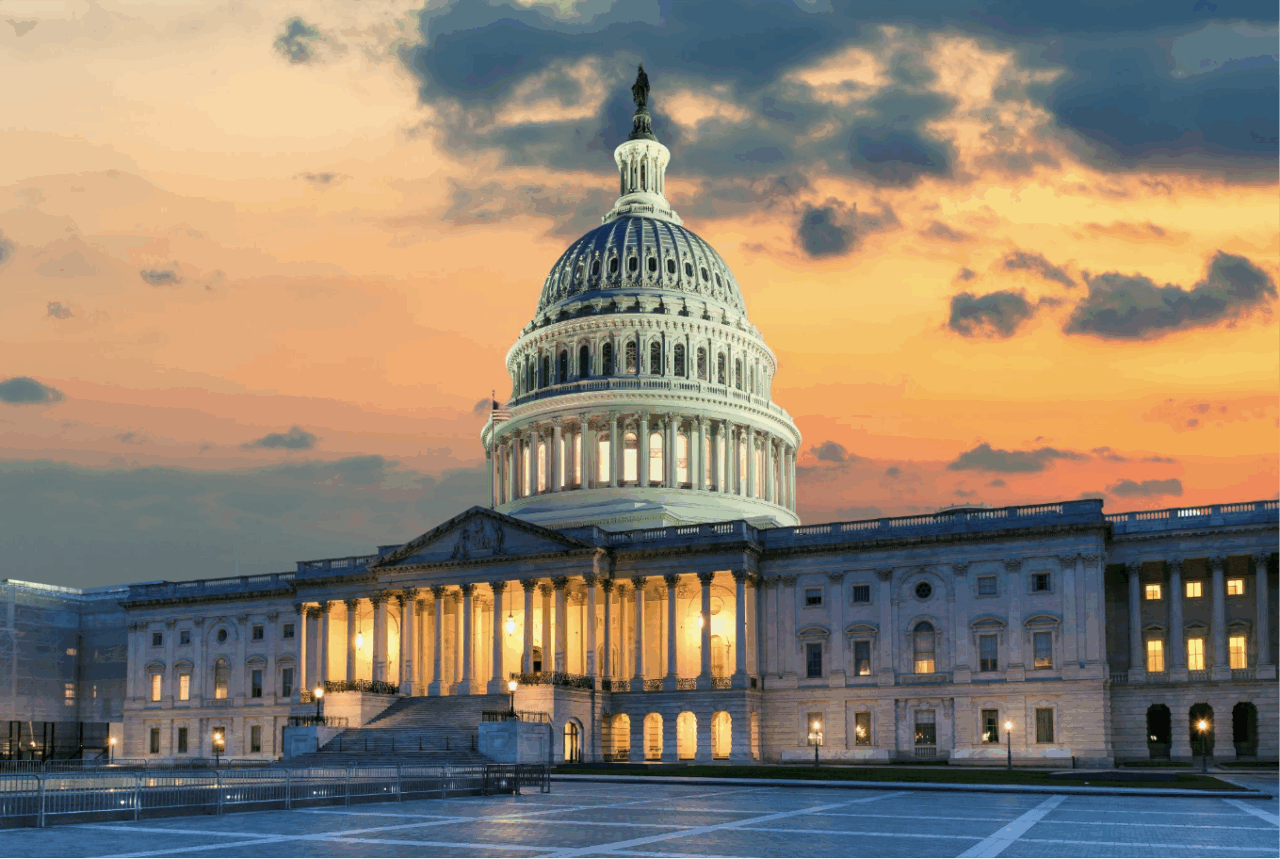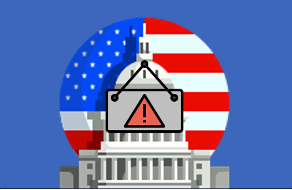Poll: Trump’s Tariffs
This Navigator Research report contains polling on views of President Trump’s tariff plan, including how much Americans are hearing about tariffs, how Americans believe tariffs will affect costs, and how Trump’s use of tariffs affects how Americans rate his handling of the economy.
Most Americans view tariffs unfavorably, and Trump’s use of tariffs dominates the negative news people are hearing about him.
Americans increasingly view tariffs unfavorably (net -23; 30 percent favorable – 53 percent unfavorable), with unfavorability rising 10 points since President Trump’s re-election (net -13; 30 percent favorable – 43 percent unfavorable). Nearly four in five Americans have been hearing “a lot” or “some” about tariffs lately (77 percent), a 25-point increase since January (52 percent). Four in five have also seen, read, or heard “a lot” or “some” news about Trump (80 percent), with more than seven in ten hearing at least some negative news about Trump (72 percent) compared to just 47 percent hearing at least some positive news about him. This has shifted dramatically since immediately after the election, when there was no difference in the shares hearing at least some positive or negative news about him (54 percent each).
- When describing the negative news about Trump, Americans overwhelmingly cite “tariffs,” as support for Trump’s tariff plan is now 14 points underwater (38 percent support – 52 percent oppose).
- Trump’s use of tariffs leads more Americans to view him negatively than positively (net -19; 28 percent more positive – 47 percent more negative), including nearly half of independents (net -37; 10 percent more positive – 47 percent more negative).
- Reminder: Trump’s approval rating for his handling of the economy is 5 points underwater (46 percent approve – 51 percent disapprove), with nine in ten Democrats disapproving (net -81; 8 percent approve – 89 percent disapprove), as well as a narrow majority of independents (net -15; 36 percent approve – 51 percent disapprove).
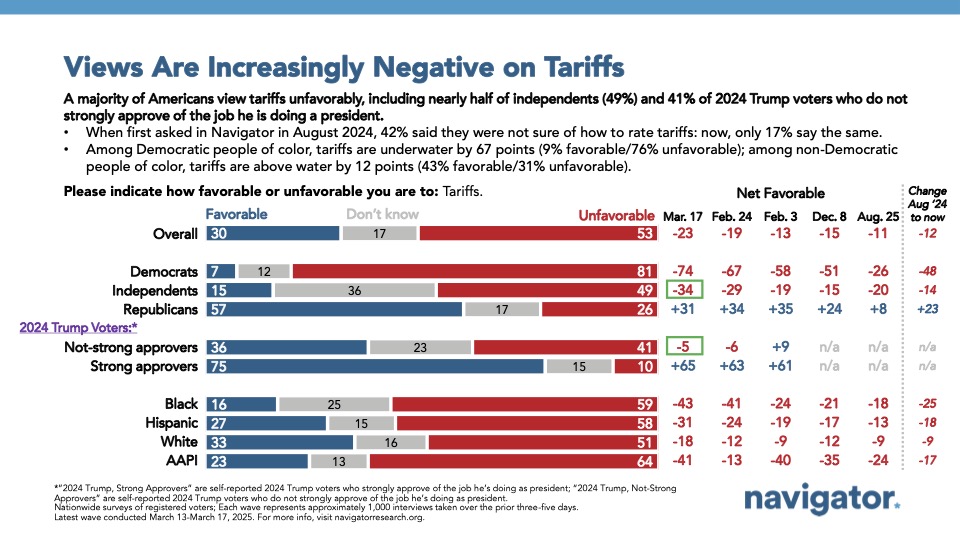

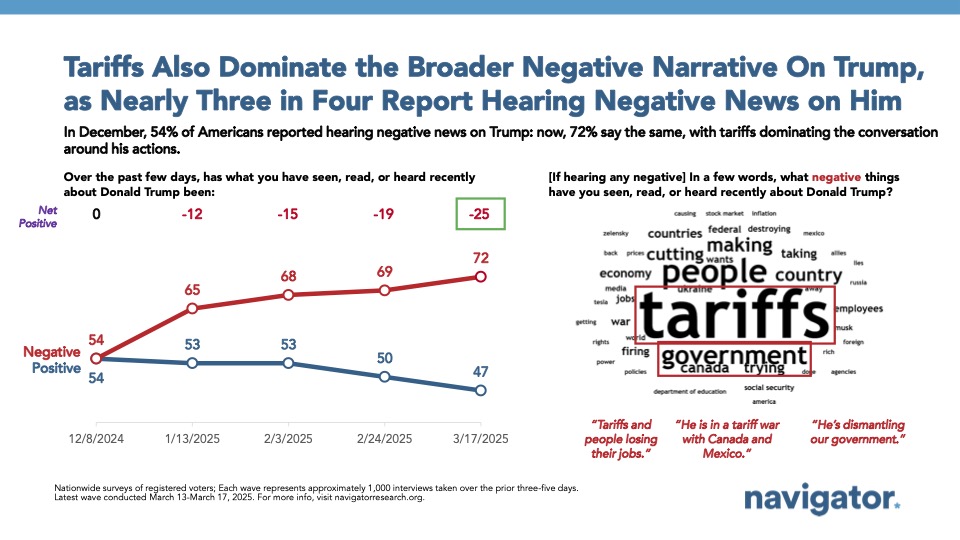
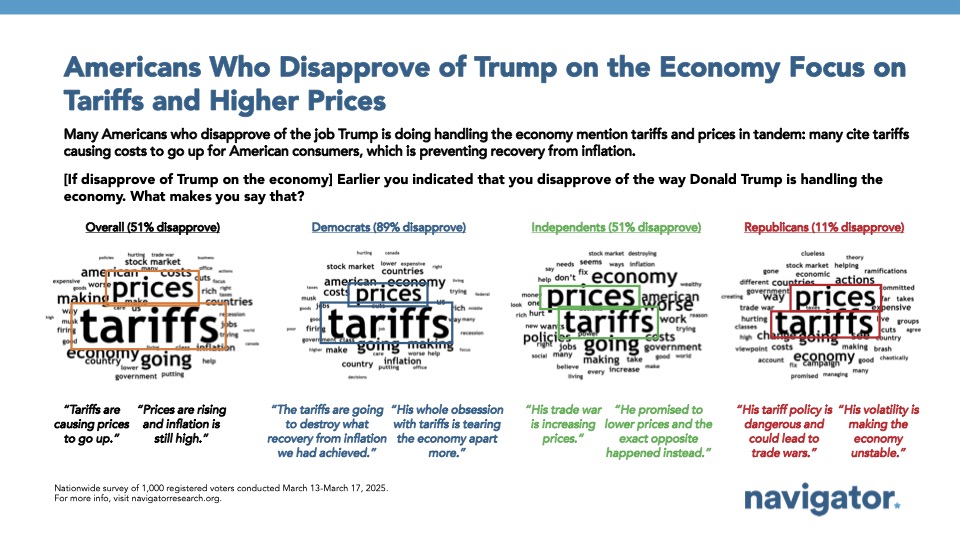
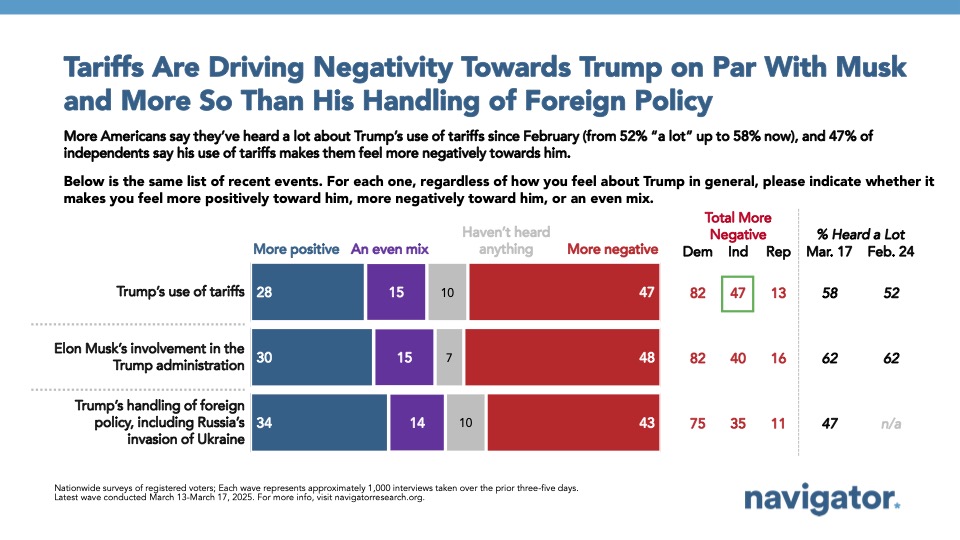
Majorities believe new tariffs will increase costs and hurt American consumers.
Two in three Americans believe new tariffs will drive up the cost of things they buy (net +55; 67 percent costs go up – 12 percent costs go down). This includes majorities across partisanship, including more than four in five Democrats (net +78; 84 percent costs go up – 6 percent costs go down), nearly three in five independents (net +48; 57 percent costs go up – 9 percent costs go down), and just over half of Republicans (net +32; 52 percent costs go up – 20 percent costs go down). American consumers are seen as the most likely to be negatively impacted by new tariffs, as 58 percent believe new tariffs will hurt American consumers compared to 25 percent who believe they are more likely to hurt foreign countries. By a narrower margin, Americans also believe new tariffs will hurt American workers (net -12; 33 percent help American workers – 45 percent hurt American workers).
- Americans believe the most concerning potential impacts of Trump’s tariff plan are that it will cost middle class families more (31 percent), that it will start a trade war with foreign countries (31 percent), and that foreign countries will retaliate with tariffs on American manufacturing (27 percent).
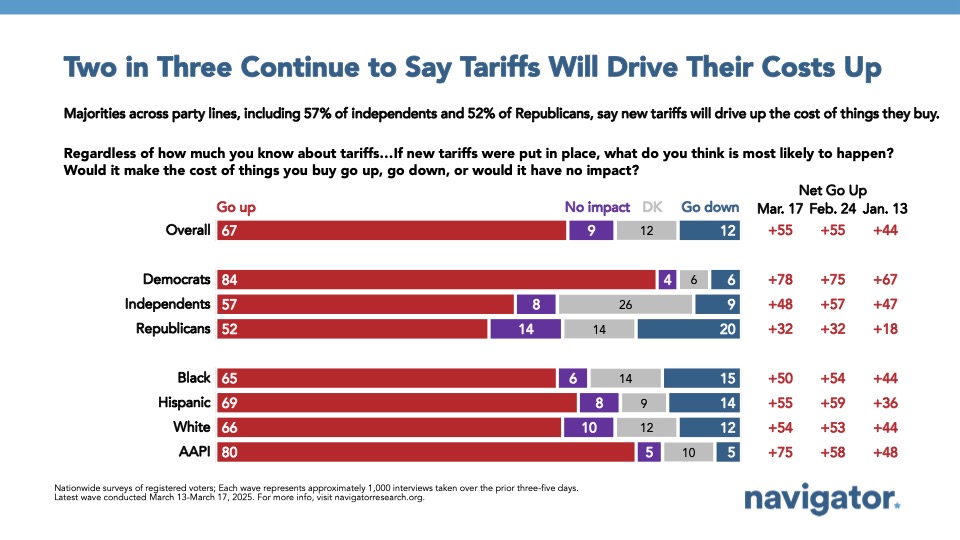
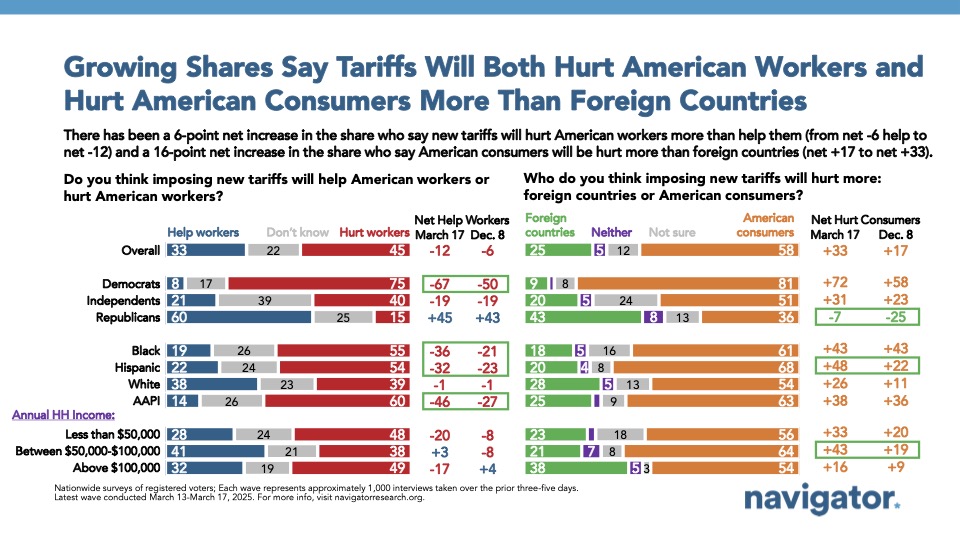
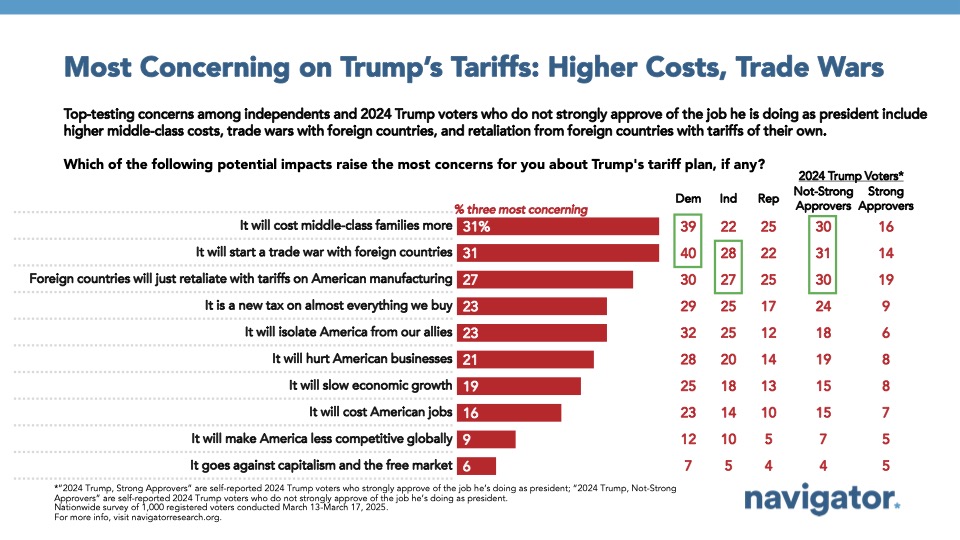
About The Study
Global Strategy Group conducted a public opinion survey among a sample of 1,000 registered voters from March 13-March 17, 2025. 100 additional interviews were conducted among Hispanic voters. 75 additional interviews were conducted among Asian American and Pacific Islander voters. 100 additional interviews were conducted among African American voters. 100 additional interviews were conducted among independent voters. The survey was conducted online, recruiting respondents from an opt-in online panel vendor. Respondents were verified against a voter file and special care was taken to ensure the demographic
composition of our sample matched that of the national registered voter population across a variety of demographic variables. The margin of error for the full sample at the 95 percent level of confidence is +/- 3.1 percentage points. The margin of error for subgroups varies and is higher.

